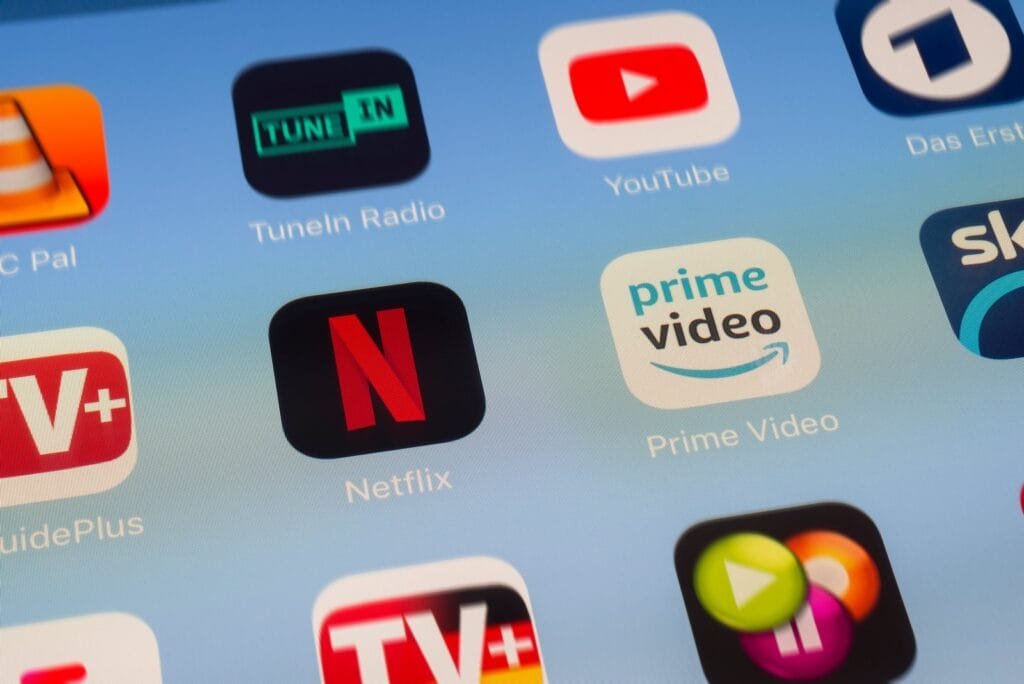While subscription services can help you save time and money, or offer access to entertainment or exclusive products, they can quickly add up and affect your budget. Read on to find out more about the risks of monthly subscriptions
There’s a monthly subscription for almost everything, from TV streaming services and meal kits to beauty boxes and special edition books. And with so many options available, it can be hard to keep track and it’s all too easy to end up spending much more than you intended.
Monthly subscriptions can sometimes help you save time and money or unlock access to things you wouldn’t be able to find anywhere else, so if you have one or more, you’re not alone. According to a 2023 Vision Express survey, the average person in the UK is subscribed to at least four different services, costing almost £500 each year. However, 45% admitted they only signed up because of a special trial offer, and 63% of those people forgot to cancel the subscription before that trial ended.
What is subscription creep?
Subscription creep is the term used to describe unintentionally signing up to more and more subscriptions over time.
It’s a process that often starts innocently enough; you might sign up to a streaming service to watch that show everyone is talking about, join the gym to get in shape for the summer, or decide to try meal kit deliveries in a busy month, but before you know it, you can end up paying for multiple subscriptions and impacting your overall finances.
Temptations are everywhere; subscription services can promise exclusive content, new features, and free trials that can convince you to sign up to more services than you originally intended – and paying for those decisions!
What are the risks of monthly subscriptions?
When monthly subscriptions work well, they can help make your life easier, save you money, or offer something you’d struggle to find elsewhere. However, there are also several potential risks of monthly subscriptions:
- High cumulative costs
While a subscription service can be affordable on its own, having multiple monthly subscriptions can quickly add up. You might only pay £10 for your music subscription, but once you’ve added a £30 gym membership, a £20 book box, and a bi-monthly food service for £20 a time, you could suddenly be facing a total monthly subscription bill of £100.
Even if you already have a monthly budget in place, you could quickly find that the cumulative cost of all your subscription gets out of control, especially when recurring charges come out of your bank account at different times of the month. If you’re struggling with your finances, these unpredictable costs could be making things worse.
- Subscription underuse
Another common consequence of having multiple monthly subscriptions is becoming overwhelmed with the options available and so not getting your money’s worth. Take streaming services for example, if you’ve subscribed to Netflix, Amazon Prime, Disney+, Apple TV, and more, you’ll have access to more TV shows than you could ever possibly watch. The same can be true if you have a gym membership you don’t use often, a monthly beauty box full of products that end up sat on your shelf for months, or a speedy delivery pass with a company you’ve only shopped with once. The more subscriptions you have competing for your attention, the less likely it is that you’ll be able to get the full value from it.
- Guilt and anxiety
If you have a lot of monthly subscriptions, including a few that you rarely use, this can lead to feelings of guilt and anxiety. Not only might you beat yourself up about not getting the value you’re paying for, but you can also feel anxious about being tied into a contract. This is especially true if you have a subscription that’s difficult to cancel. The guilt of not making it to the gym for a month, for example, can be exacerbated if you’re paying for an annual subscription that makes you feel bad for wasting money as well as not working out.
- Overconsumption
One of the biggest risks of subscribing to a service that involves a product of some kind is overconsumption. If you receive a monthly beauty box filled with tester products or a package of items related to one of your interests, you could end up with a house full of things that you wouldn’t have chosen to buy. These items can cause clutter to build up (which could also be detrimental to your mental health) or become just another thing that you need to get rid in your annual clear out. Overbuying is also bad for the environment, leading to more goods ending up in landfill.
- Tied into one brand
Subscribing to one company can also stop you from shopping around to get the best deal. Your curated food box might offer more expensive recipe options than those you’d find in your local supermarket, you could miss out on a special edition book you love because you’re subscribed to a different service, or you might choose to buy all your clothes from one website because you’ve already paid for free shipping. Being tied in to one brand like this can feel restrictive and limit your spending options.
How can I effectively budget with monthly subscriptions?
- Audit your monthly subscriptions
With subscription creep, it can be hard to know exactly how much you’re paying for all the different services you have. Conducting an audit can help you get a clearer view of the monthly subscriptions you have and whether you’re using them.
Once you have your list, start to prioritise them. Try to put essential subscriptions at the top of your list, such as a medical or insurance subscription, alongside those that have a tangible benefit to your life. Your Spotify subscription might not be essential, but it could be the one thing that gets you through your job as a long-distance driver.
Next, cancel any subscriptions that you don’t use or that are unnecessary. If you tend to put admin tasks on the back burner, save a chunk of time in your diary to blitz through all your cancellations in one go.
- Set a monthly subscription budget
Setting a monthly subscription budget can help you keep subscription creep at bay and serves as a reminder of just how much all your different services cost each month. Based on how much disposable income you have available, set aside a percentage of your budget that is wholly dedicated to subscriptions. This could be anything from £10 to £100 (or more) depending on your individual circumstances.
If your total monthly subscriptions fall within that budget, you can continue safe in the knowledge that you can afford the services you have. However, if you find a new subscription that you’d like to add but it’ll take you over budget, keep in mind that you’ll need to cancel one of your existing services to avoid overspending.
- Rotate subscriptions
Another way that you can continue enjoying your monthly subscriptions without breaking your budget is to rotate them. This works especially well with services that fall within the same sector, such as entertainment streaming subscriptions. It’s also a good way to avoid the anxiety and guilt that can come with feeling like you’re not making the most of multiple subscriptions. Instead, choose one platform to subscribe to each month or every other month and cancel all the others. That way, you can enjoy content on all the different streaming services over time without becoming overwhelmed with the options available.
- Set reminders
Many people sign up to a subscription because of a free or discounted trial. Subscription companies often offer these tempting incentives at the checkout or in a well-timed email, and it’s easy to think, why not? However, it’s important to remember that no matter whether they last seven, 30, or 90 days, these discounted or free trial periods will eventually end.
Some companies will send you a reminder email to let you know that your trial will end soon, but others won’t inform you and will simply start taking payments as soon as the free period is done. Avoid being taken by surprise by setting a reminder on your phone as soon as the subscription starts so that you can be sure to cancel before the charges kick in.
- Check your numbers before committing
When you’re thinking about starting a new monthly subscription, don’t rush in. Taking a step back and spending time doing the maths can save you more money in the long run. Work out exactly how much you’ll be saving; if you only shop from a website twice a year, paying for delivery each time might be cheaper than taking out a premium free shipping subscription.
Don’t always agree to the annual plan. While this option is often discounted, if you’re only going to need access to the service for two or three months, paying the higher amount for a month-by-month plan could be better value for money than committing to a year of access that you won’t use.
Look at the different options available before you click confirm; you might be able to bundle two or three services in one package to save on your subscription fees or negotiate directly with the company to get the best possible price.
Need to get better control over your monthly spending? Our team of experts is here to help. Give us a call on 0161 660 0411 or send a message here




